Examples of Bloom Form and Petal Count in Roses

Hello friends! I’ve been meaning to put together a reference for rose bloom forms and types for ages and finally sat down and did it! Gosh, this took A LOT longer than I thought it would, but all that hard work will be worth it if it’s useful to you. I’m certainly not the first to do something like this, and I’m sure there are better ones out there somewhere–not to put myself down or anything but heaven knows I’m no expert. In fact, if I’ve learned anything from blogging about plants over the years, it’s that the more I know, the more I realize I don’t know. Ha! But that’s what makes this rosy adventure so exciting. Enjoy!
————————————————————–
Let’s start with how roses are classified by petal count…
Single
There is only one rose, that I know of, that can have as few as 4 petals and that is the species R. sericea. Someone correct me if I’m wrong about that! All other roses will have at least 5 petals. A rose described as a “single” has between 4-8 petals. “Singles” have a wild rose look to them that I absolutely love. An example of a single rose is R. rugosa ‘Alba’
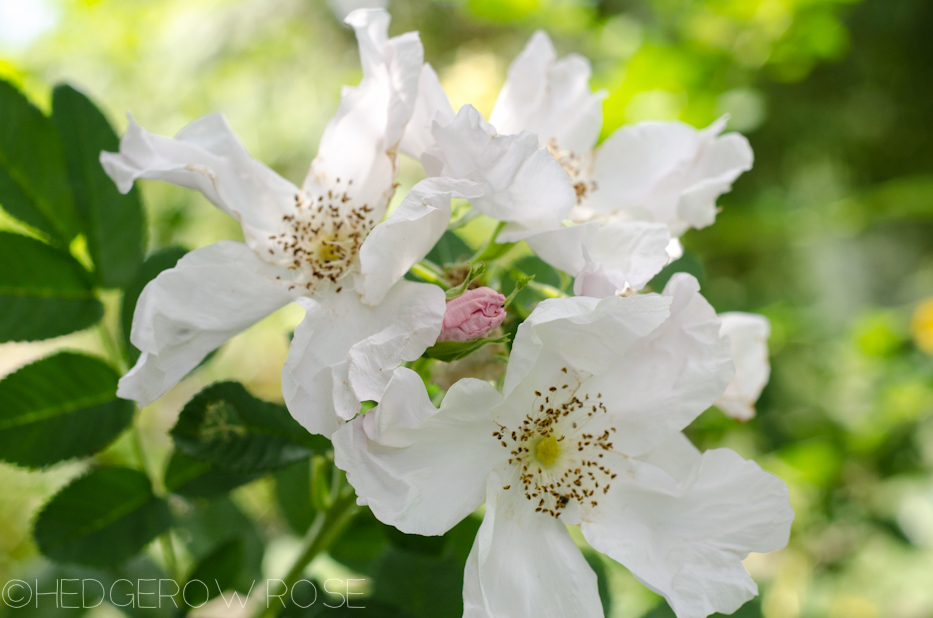
Semi-Double
A rose described as a “semi-double” will have a 9-16 petal count. I think semi-doubles have a relaxed, open look to their blossoms. The stamens can often be seen folded among the petals. An example of a semi-double rose is ‘Rosa Mundi’ (aka R. gallica ‘Versicolor’)
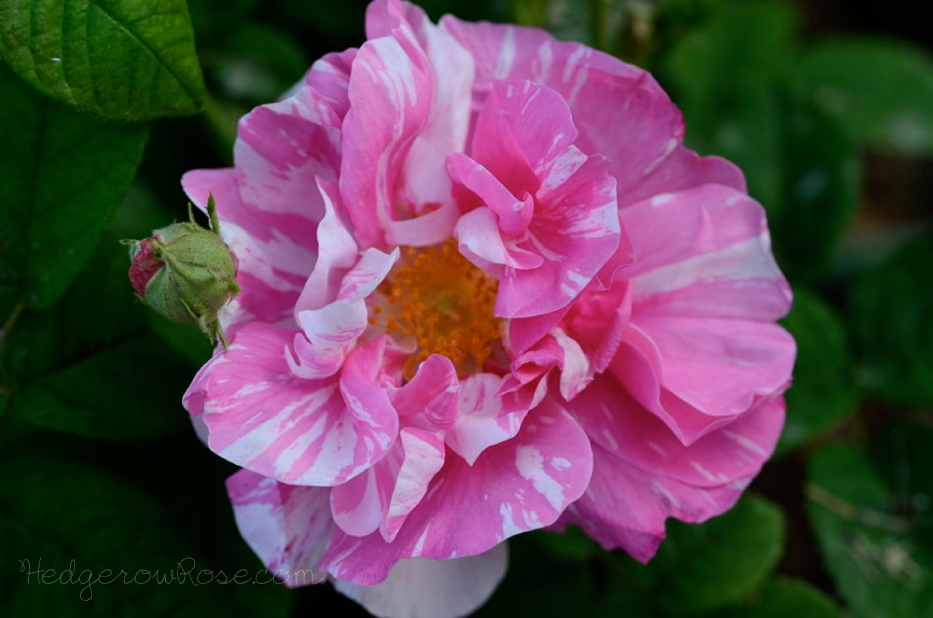
Double
A “Double” rose will have 17-25 petals. Again, we’re just talking about petal count right now, not blossom shape (scroll further down for that.) With doubles, now we’re seeing a fullness to the rose blossom. An example of a double rose is ‘Oso Easy Peachy Cream’

Very Double
Often roses fall somewhere in between categories with their petal count. This isn’t an exact science. Something you might hear a lot is a rose described as “very-double.” Such an example would be ‘Madame Alfred Carrière’ with up to 30 petals.
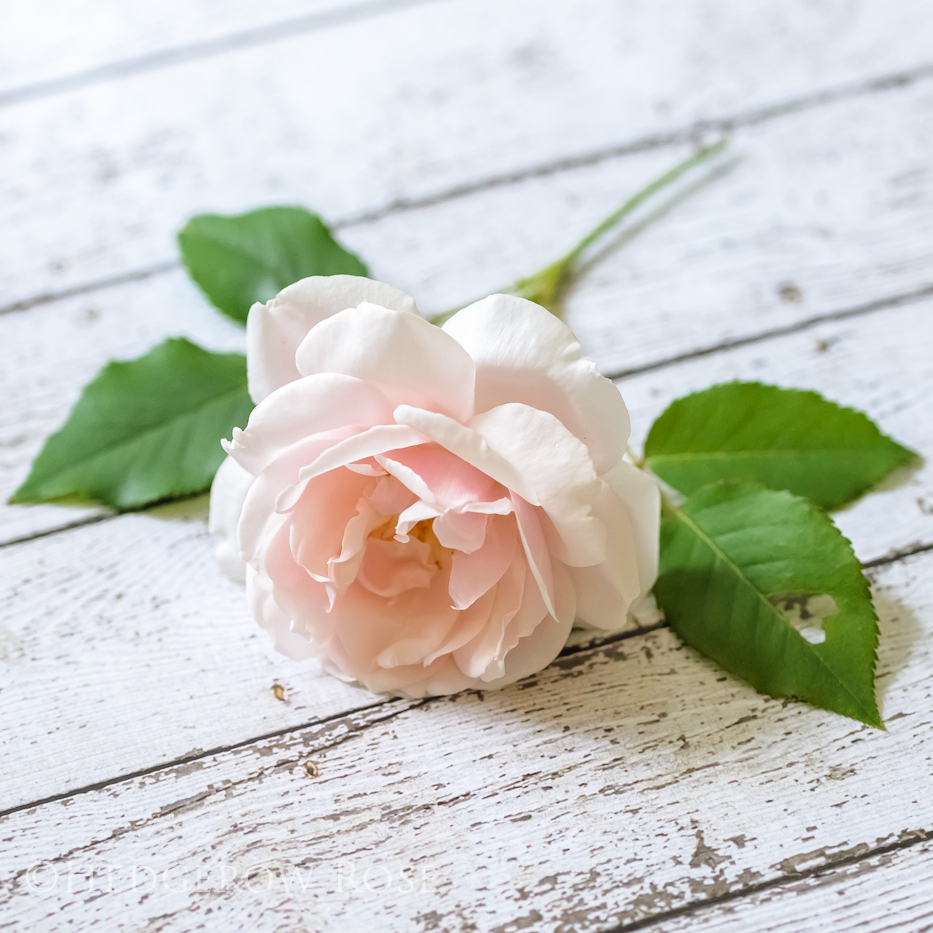
Full
A rose described as “Full” has more petals, 26-40 (sometimes a bit more.) I think these types of blossoms have a “traditional rose look” to them, like that you see in artistic renderings, don’t you? An example of a full rose is ‘Julia Child’
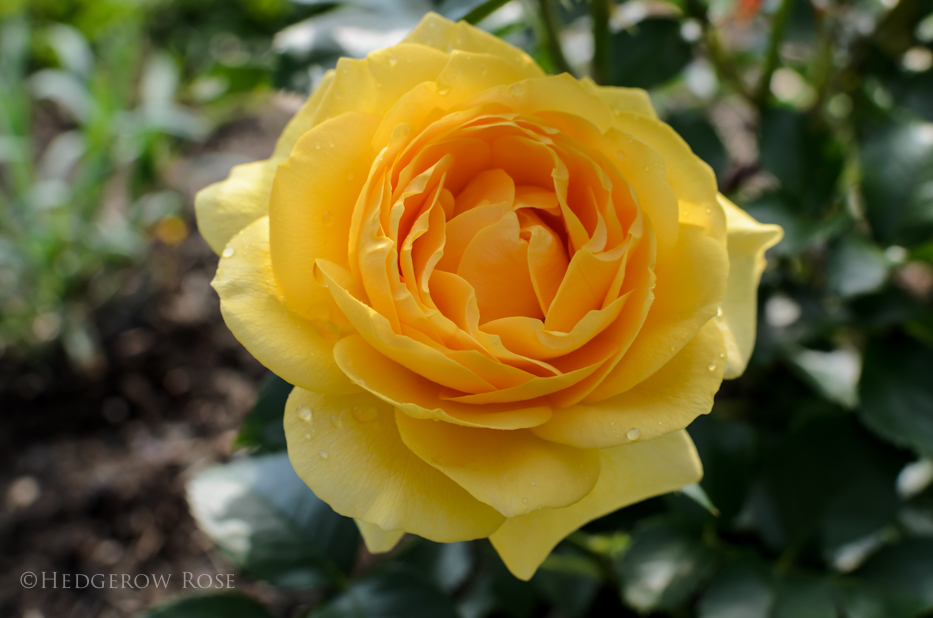
Very Full
Now we get to the good stuff *rubs hands with glee*. Roses described as “Very Full” have a whopping 41+ petal count. Yeah, baby! These roses are super romantic and lush looking. They make you want to stick your face in them, don’t they? An example of a very full rose is ‘Félicité Parmentier’
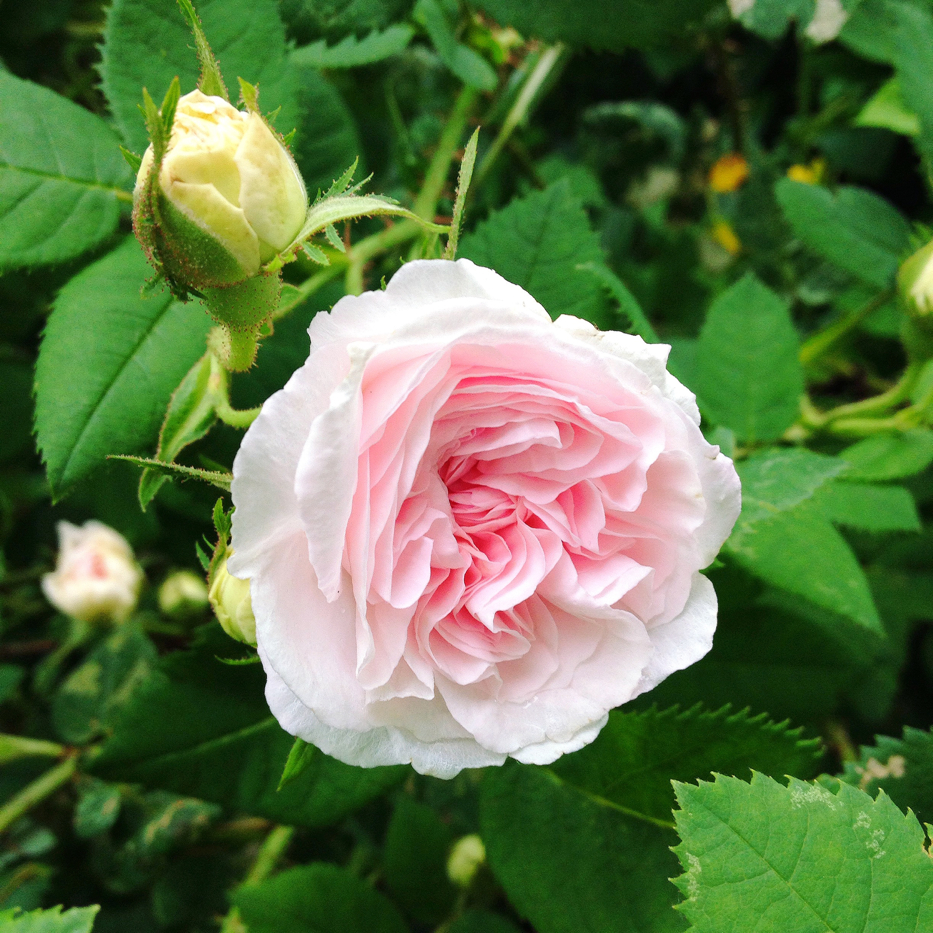
Now let’s talk Bloom Shape!
This is where it gets weird. 
Cupped
A bloom form described as “cupped” has petals arranged in a curving, circular pattern, with a scooped-out looking center. I think they remind me of little teacups! An example of a cupped bloom can be seen in ‘Alnwick Castle’

Flat
Bloom forms described as “flat” are pretty self-explanatory, I suppose! Petals lay fully open and the bloom is shallow, giving it a more 2-dimensional look. An example of a flat bloom can be seen in ‘Oso Easy Cherry Pie’. Rose blooms classified as having a flattened shape are not necessarily a single, however. I will show another example towards the bottom of this post.

Globular
I love the globular bloom form but I don’t like the name! I suppose the root word is “globe” (but I always hear “blobular” b/c I’m weird.) These bloom forms have a very rounded, spherical shape. An example of a globular bloom form is ‘Jude the Obscure’

High-Centered (Point)
Sometimes this bloom form is called “exhibition.” Roses that have high or pointed centers have a little swirl in the center of the bloom that sits higher than the rest of the petals. This type of bloom form is appreciated by many who show roses. An example of a rose that starts off with a high, pointed center is ‘Sedona’
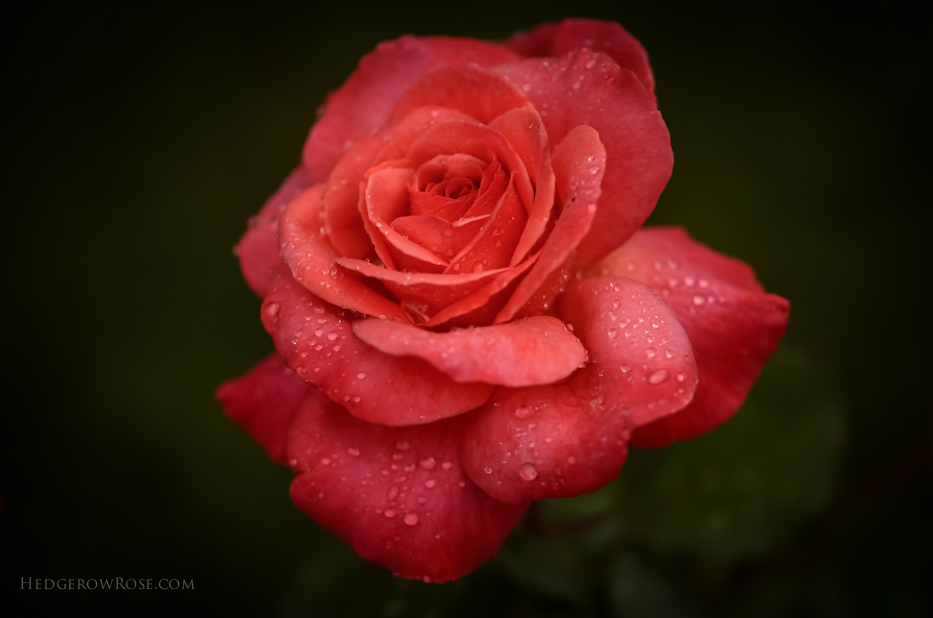
Pompon
I have the perfect example of the pompon bloom form, the aptly named ‘Pomponella.’ This bloom form describes rounded, clusters of buds like a bunch of tiny pompons, hence the name!
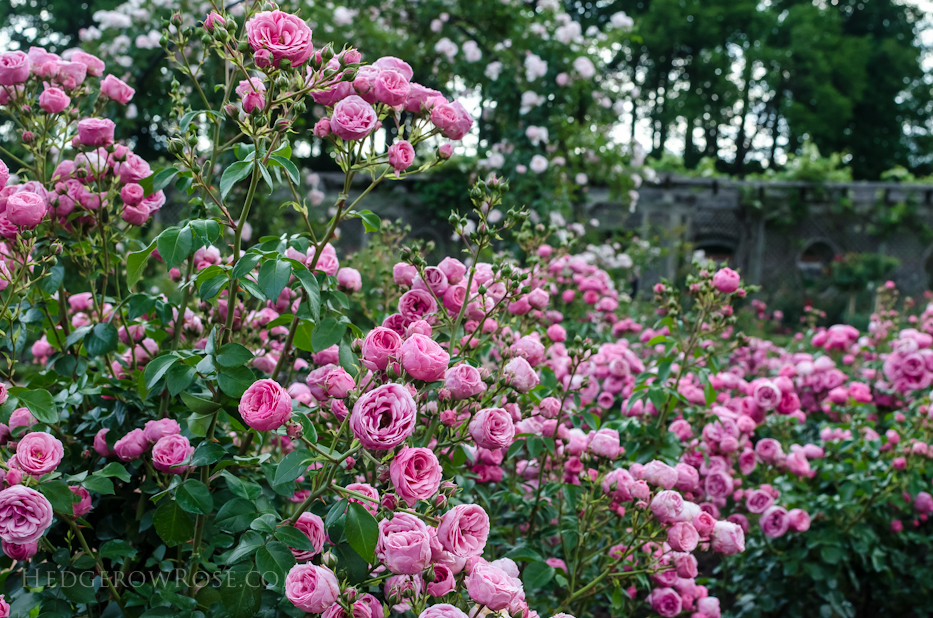
Quartered
And now we come to one of my favorite bloom forms: quartered. In this formation, the petals are tightly overlapping, flattened and arranged much like a quatrefoil pattern within the bloom. Can you see it? Certain roses display more defined quartering than others. An example of a quartered bloom form can be seen in ‘William Shakespeare 2000’

Rosette (Ruffled)
Rose blossoms that are described as having a “rosette” bloom form have packed petals in a more random size and arrangement. For me, a way to remember this form is to think of it as “ruffled.” An example of a rosette or ruffled bloom form is ‘Crocus Rose’

Urn
When you think of the shape of an urn, something tall and rounded, then you’ve got the basic idea of an urn-shaped bloom form. Usually, one sees this with Hybrid Tea roses that also have the high-centered, pointed bloom form described above. For example, the Hybrid Tea ‘La France’ is described as “Elegant, urn-shaped buds open into large, full, high-centered flowers…” [From Gardening with Roses, by Judith McKeon, p. 35:]
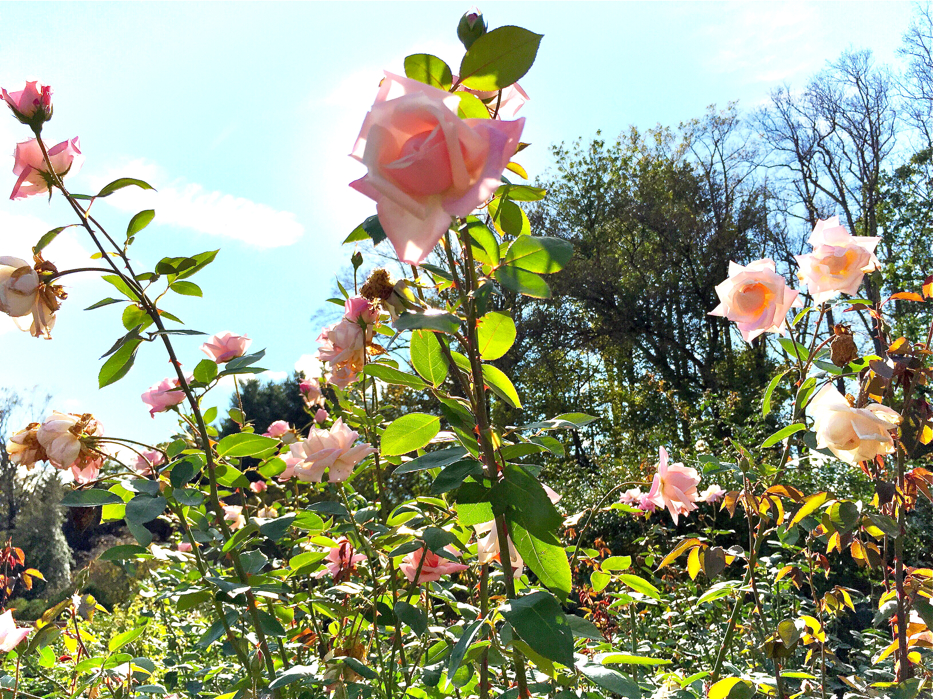
Attributes in action!
A rose blossom can have overlapping attributes. For example, ‘Madame Hardy’ is described as cupped but she can also display a quartered formation in her petals. She is also known for having a button eye which I’ll describe further down.

…the rose ‘A Shropshire Lad’ is described as having a cup shape that opens to a rosette…
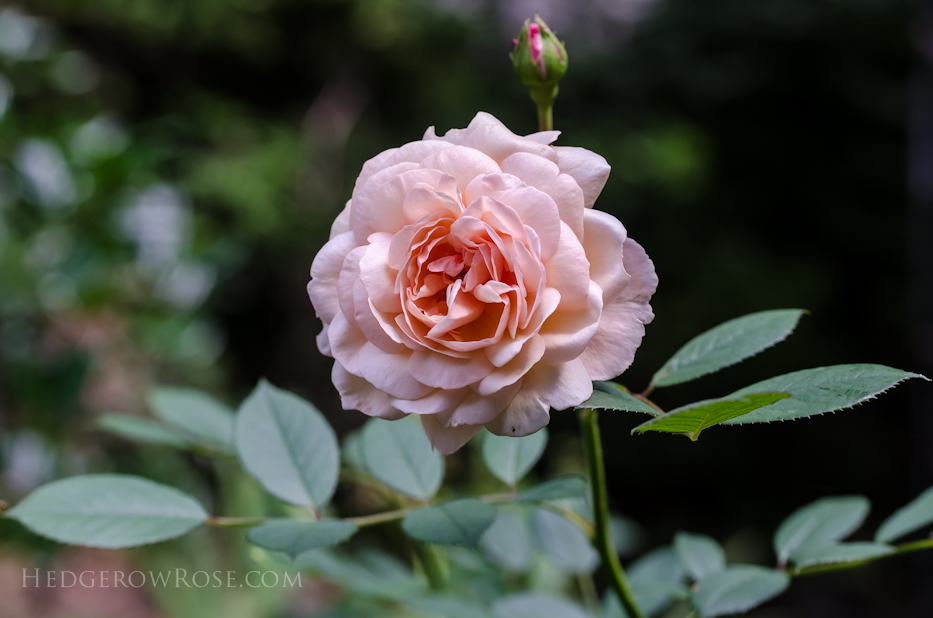
There can be various levels of bloom forms, such as a shallow cup or deep cup shape. The rose ‘Harlow Carr’ has what is described as having a shallow cup.
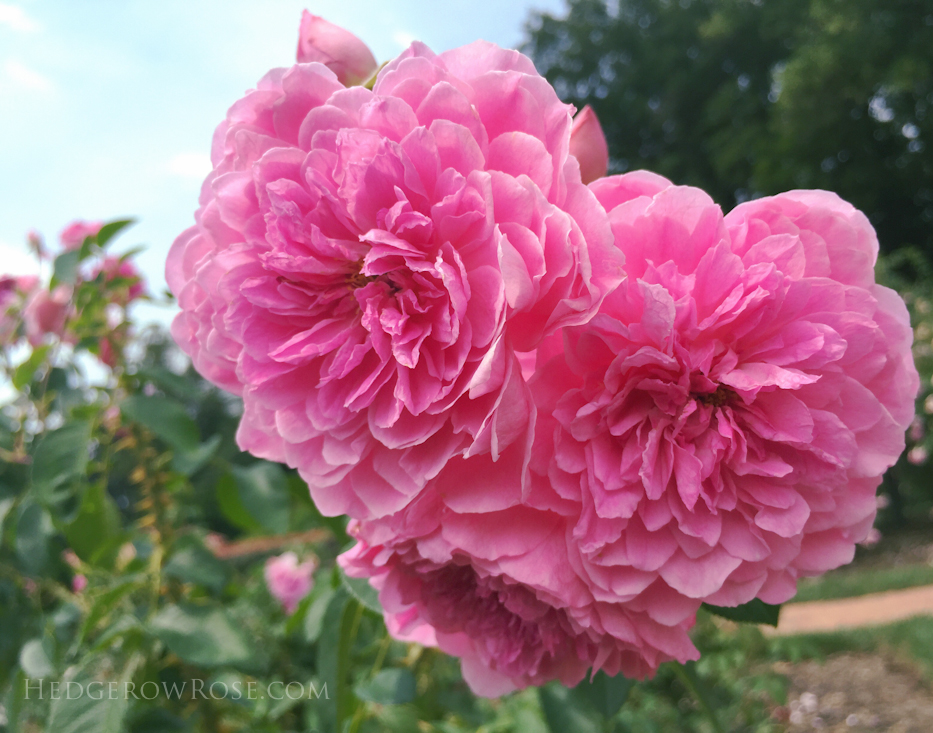
Roses can have a flat shape and not be singles. ‘Erinnerung an Brod’ is an example of a rose with flattened, full, quartered blooms.
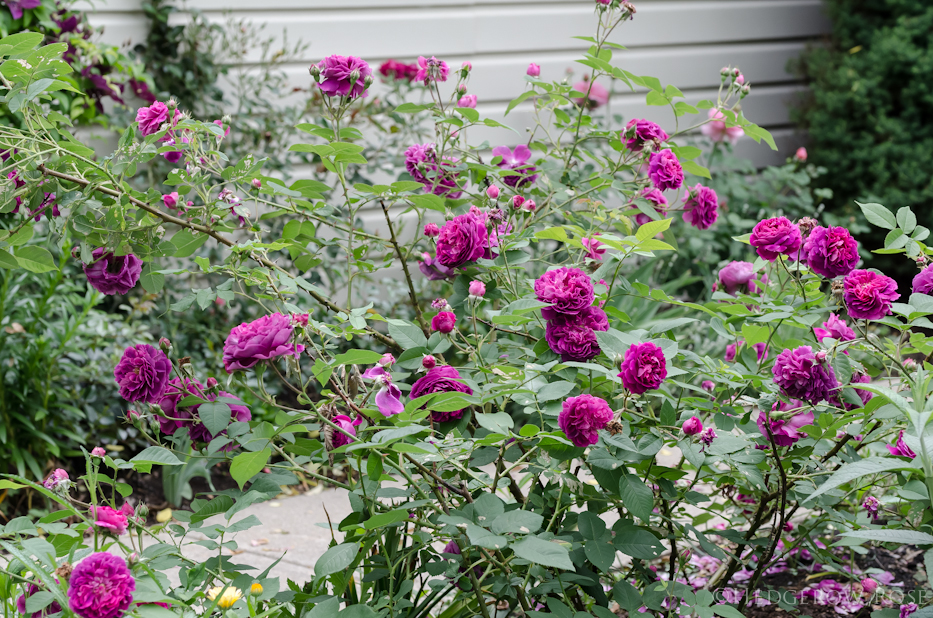
In ‘Mignonette’ we see a rose that starts out globular and then opens to flat, semi-double/double blooms.
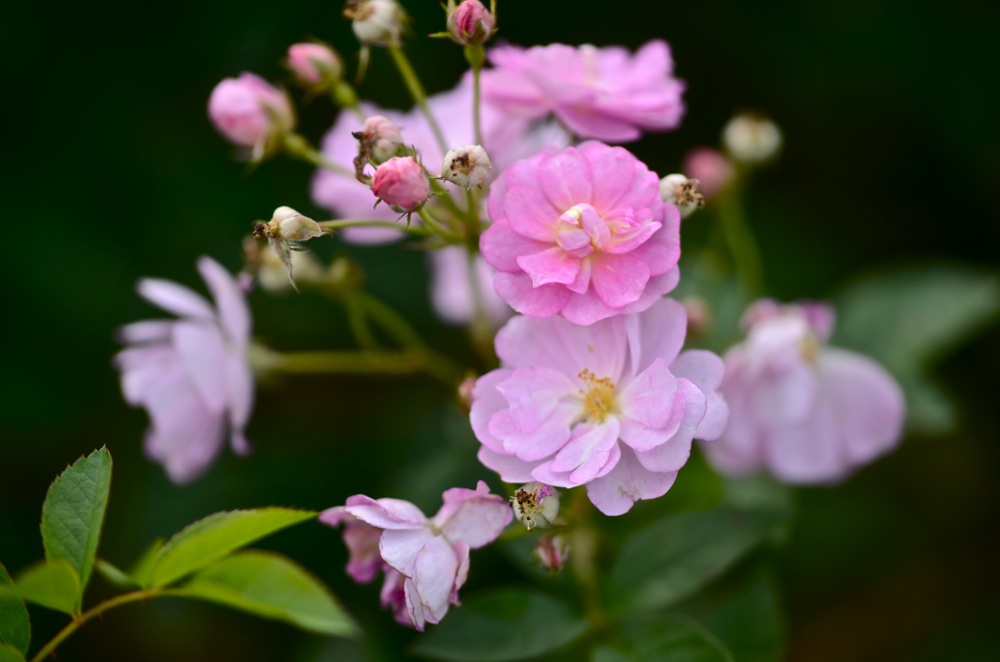
Rose blooms that are packed with petals sometimes display what is called a button eye or pip in their centers. I’ve found that rose gardeners are pretty divided as to whether or not they like this attribute. Personally, I love it–not on all my roses, but on some, which is part of their personality. Graham Thomas describes button eyes thusly: The “button eye” is a character peculiar to the very full-petalled old roses; the centres, composed of stamens turned into petals are packed so tightly into the empty receptacle in the heart of the flower that they cannot unfold and remain in an incurved cluster, shaped like button. [From The Art of Gardening with Roses, by Graham Stuart Thomas, p. 43:] (Note: A “proliferation” or “vegetative center”, what looks like a bunch of small green leaves is emerging from the center of a rose blossom, is not a button eye but considered to be a deformity in the blossom. Some roses are more prone to vegetative centers.) A button eye can be seen in this photo of ‘Comtesse de Rocquigny’.
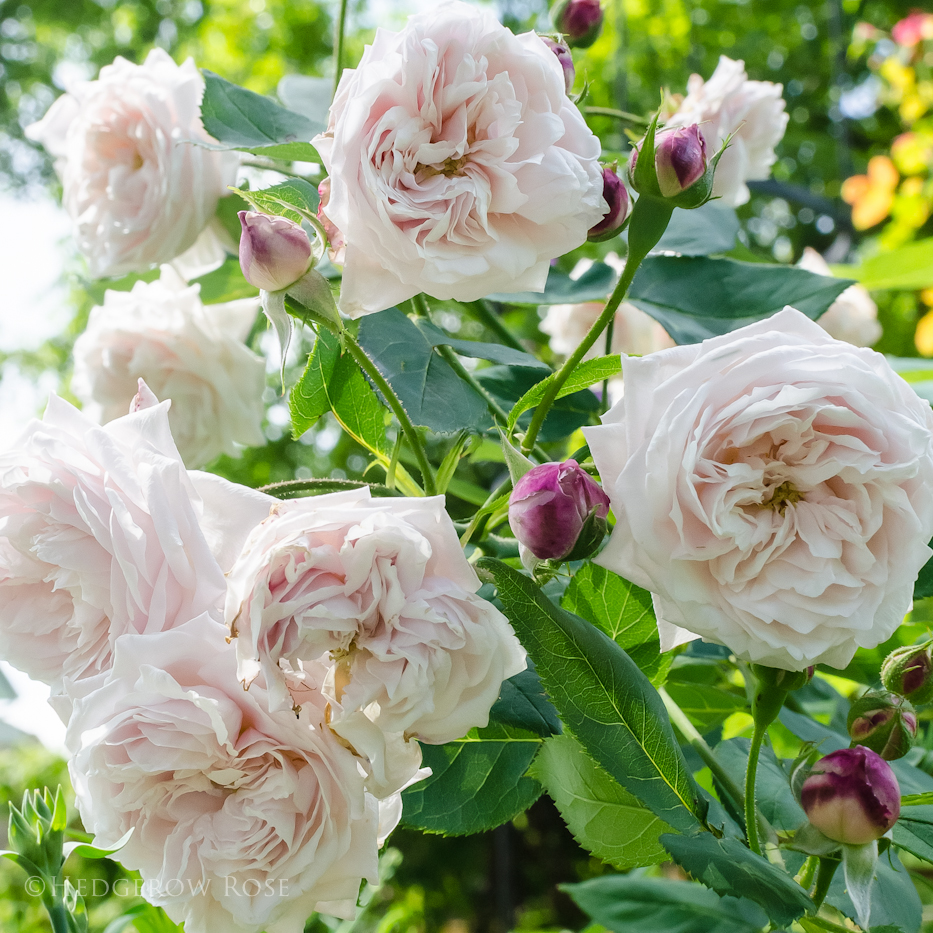
Sometimes a rose might be described as having reflexed petals–petals which curve outwards as the blossom opens. For example, ‘Munstead Wood’ is a very full rose, sometimes globular, with reflexed petals.
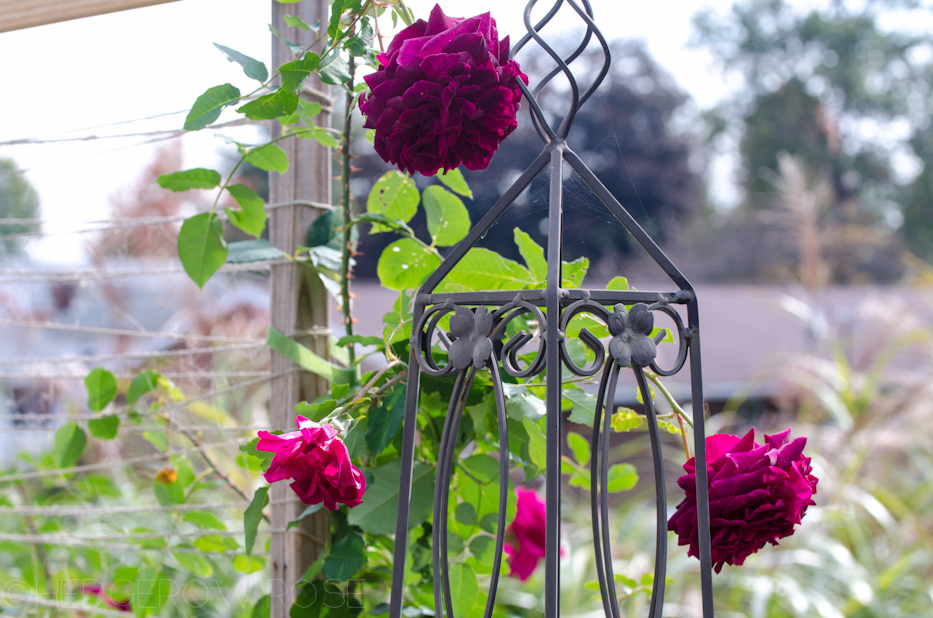
Let’s have a little fun and quiz your knowledge!
Answers for quizzes are going to be at the very bottom of this post.
Quiz 1 – Petal Count
How would you classify the following roses according to their petal count?
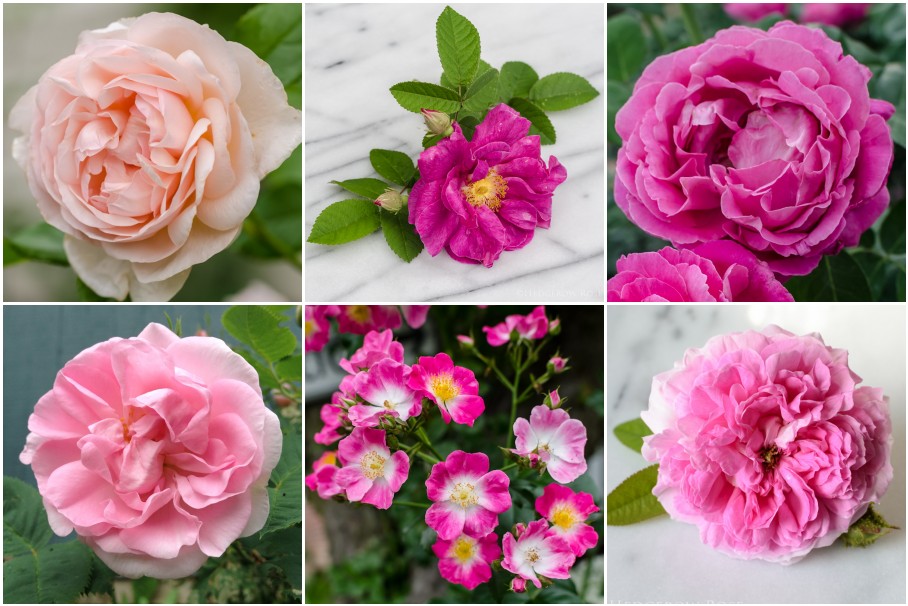
Quiz 2 – Bloom Forms
The following roses display various bloom forms and attributes such as: rosette/ruffled, urn, pompon, button eye, flat, quartered, high center/point, cupped and globular. Which main attribute would you assign the following?
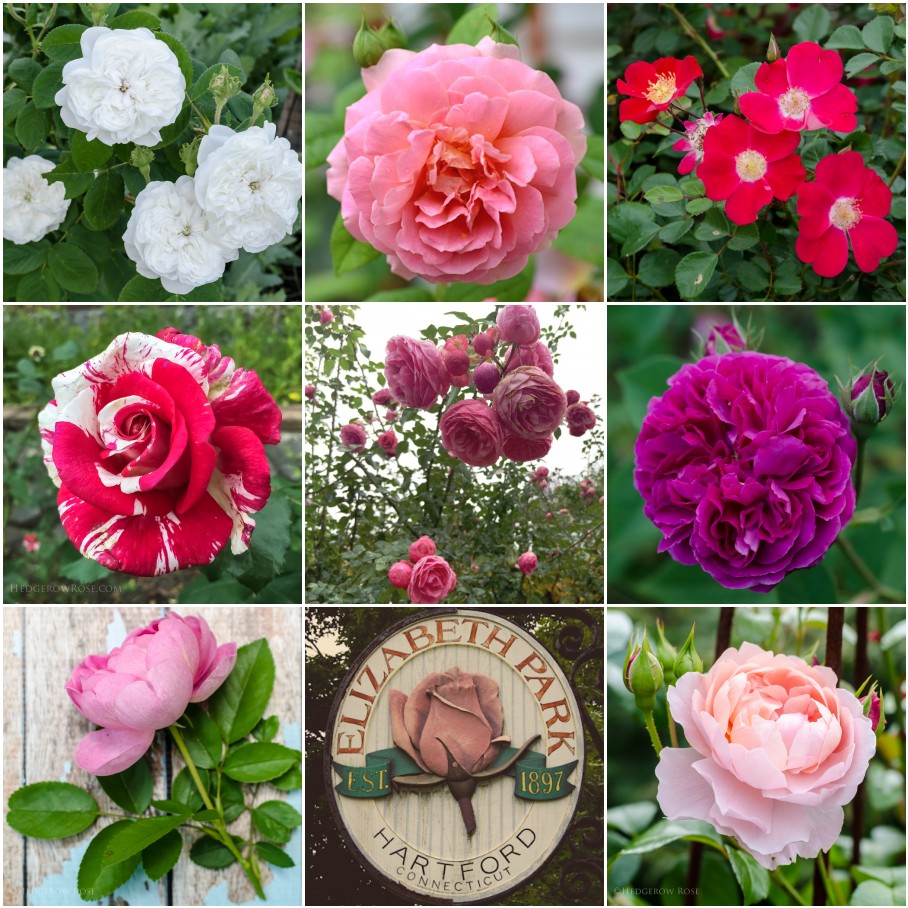
————————————————————–
Thanks for playing along! And now, fellow rose-lovers, what am I forgetting? What’s your favorite type of petal count and formation? Mine is probably a tie between very full/quartered and singles. What about you?
————————————————————–
Answers to quizzes:
Quiz 1 – Petal Count
Top Row: Heritage-FULL, Apothecary’s Rose-SEMI DOUBLE, Paul Neyron-VERY DOUBLE
Bottom Row: Celestial-DOUBLE, American Pillar-SINGLE, Common Moss-VERY FULL
Quiz 2 – Bloom Shape
Top Row: Mme Hardy-BUTTON EYE, The Endeavour-ROSETTE/RUFFLED, Oso Easy Cherry Pie-FLAT
Middle Row: Unknown/Biltmore Trial Rose-HIGH CENTER/POINT, Pomponella-POMPON, Erinnerung an Brod-QUARTERED
Bottom Row: Royal Jubilee-GLOBULAR, Image on sign at Elizabeth Park-URN, Strawberry Hill-CUPPED




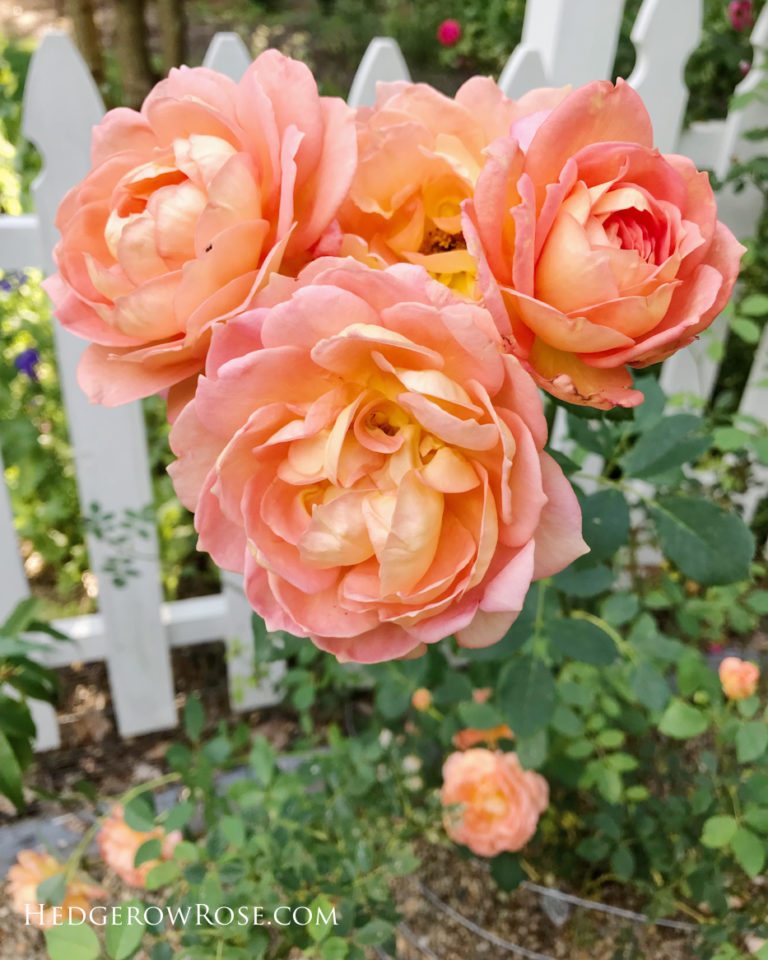

Wow, thank you so much for this! Awesome work! I will bookmark it for future reference
Hooray!
Laurie, this is a better explanation than in many rose books. The experts can’t help themselves from throwing in a bunch of technical stuff that makes me yawn. Most of us are not scientists, but we do want to know enough to be able to enjoy our rose passion to the fullest. Like you, my favs are singles and very full quartered. Not crazy about semi-doubles with the exception of Apothecary’s Rose, and your photo of her captures her personality. Any progress on the cutting exchange? I’m intrigued.
Thank you Andrea! That makes me so happy that you got some use out of it. I get confused (and discouraged) when really technical jargon gets splashed about so I know just what you mean. I’m not too crazy about the semi-doubles, either, except in certain varieties like AR which I’m glad you liked! Still working on the logistics of a cutting exchange. The backend stuff to keep it functional, private, and specific might be a bit over my head. But I haven’t given up! I’ll have an update on that one way or other soon.
This is great info – especially paired with your fantastic photography. I really like globular/chalice shaped roses – I think they convey an elegance that is really special in the garden. I have really enjoyed ‘Royal Jubilee’ this past year. The quartered shapes are beautiful as well – calling for time to study them! I don’t have the space in my current garden, but I hope to grow Erinnerung an Brod one day. Every time you post a photo of that rose it really catches my eye. The coloring of that rose combined with the quartered form is perfection!
Thanks so much, Cole! I do love the globular bloom form, as well. Royal Jubilee is a great example of that! I think you’d really love EAB, although she does get blackspot pretty regularly at the end of the summer I forgive her for it. I’m not sure but I might have brought a rooted cutting with me from the old garden…? So many of them lost labels and one that I thought was Arcata Pink Globe started getting blackspot last summer. I was actually happy to see those spots b/c I have enough APG and that might indicate that it was actually EAB. If it is, and I get a decent size out of it, I might have some cuttings to share. *cross fingers* Hope you’re doing well and thank you for visiting!
I really love this post. I can refer to this when I have questions about bloom forms.
Yay! So glad it’s helpful to you!
Thanks so much! The pictures make it much easier to see exactly what you mean. I love the very full globular and quartered best myself, although I am thinking of trying Rosa Arkansana this year as I’ve never had a single rose before.
Awesome! I love those full roses, too, but there is something really magical about singles. R. arkansana is a beauty!
Thanks for the great informations and beautiful pictures. I am itching for spring to come right away! I love the “lush and full” looking roses the most but then again I love all roses..
I’m itching for spring, too! And I agree, it’s too hard to choose…I also love all the roses!
best explanation! Thanks
So glad it helped!